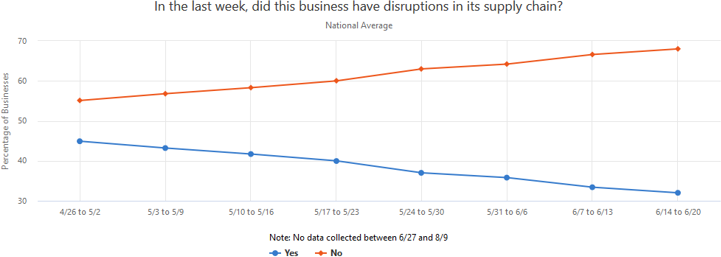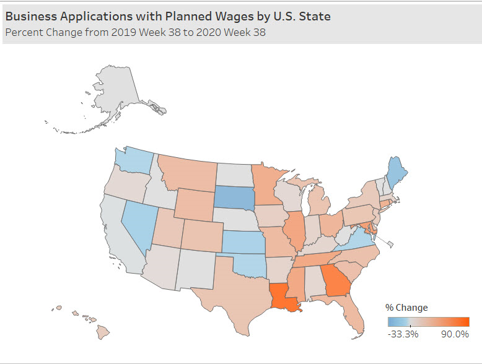
|
|
|
Weekly Pulse Newsletter
The U.S. Census Bureau is in a unique position to produce data on the social and economic effects of COVID-19 on American households and small businesses.
|
Household Pulse Survey Updates
See Data Tables
Based on responses collected September 2 through September 14, the Household Pulse Survey estimates that:
-
25.2% of American adults expect someone in their household to experience a loss in employment income in the next 4 weeks
-
36.4% of adults live in households where at least one adult substituted some or all in-person work for telework because of the #coronavirus pandemic
-
10.5% of American adults lived in households where there was either sometimes or often not enough to eat in the previous 7 days
-
7.3% of adults are either not current on their rent or mortgage payment, or have slight or no confidence in making their next payment on time
- Of adults living in households not current on rent or mortgage, 33.5% report eviction or foreclosure in the next two months is either somewhat or very likely
-
32.7% of adults live in households where it has been somewhat or very difficult to pay usual household expenses during the #coronavirus pandemic
-
80.9% of adults in households with post-secondary educational plans had those plans cancelled or changed significantly this fall
|
|
Small Business Pulse Survey Updates
See Data Tables
Based on responses collected September 13 through September 19, the Small Business Pulse Survey estimates that:
-
43.0% of U.S. small businesses have experienced a moderate negative effect from the COVID-19 pandemic
-
45.6% of U.S. small businesses believe more than 6 months of time will pass before their business returns to its normal level of operations
-
54.7% of U.S. small businesses did not #furlough or lay off any paid employees after March 13, 2020
-
59.9% of U.S. small businesses experienced no change in operating revenues in the last week
-
68.0% of U.S. small businesses experienced no disruptions in their supply chain in the last week
-
64.4% of U.S. educational services businesses have experienced an increase in the use of online platforms to offer goods or services since March 13, 2020
-
49.2% of U.S. retail trade businesses have experienced domestic supplier delays in the last week
-
38.8% of small businesses in the Portland-Vancouver-Hillsboro, OR-WA Metro Stat Area have experienced domestic supplier delays in the last week
|
|
|
  Help us spread the word about Census Bureau data. Share this story on social media or forward it to a friend.
 COVID-19 Data Hub and More Resources
 The Census Bureau has launched a new tool — the COVID-19 Data Hub — designed to help guide the nation as it begins recovery efforts from the sweeping COVID-19 pandemic by providing economic and demographic data. Version 1.4 is now available!
 Business Formation Statistics Updates
The Census Bureau recently released the updated weekly Business Formation Statistics (BFS) series with business application data at the national, regional, and state levels through the week ending September 19.
About the Data
 New Census data shows year-to-year changes in weekly state Business Applications from Corporations.
|
About the Census Bureau
We serve as the nation’s leading provider of quality data about its people and economy. The Census Bureau is the federal government's largest statistical agency. We are a scientific organization focused on data. Policy-makers, businesses, and the public use our information to make far-reaching decisions.
|